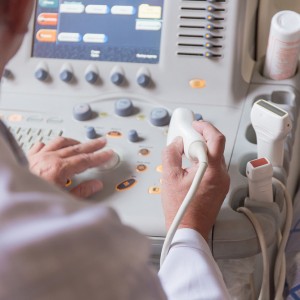 Researchers at the University of Arkansas developed a computer simulator that delivers tailored electron beam tunings for radiation therapy. The research study published in the Journal of Applied Clinical Medical Physics will provide improved radiation therapy for patients with cancer. The simulator was developed as part of Justin LeBlanc’s master’s dissertation in physics at Louisiana State University in collaboration with colleagues at the Sam M. Walton College of Business.
Researchers at the University of Arkansas developed a computer simulator that delivers tailored electron beam tunings for radiation therapy. The research study published in the Journal of Applied Clinical Medical Physics will provide improved radiation therapy for patients with cancer. The simulator was developed as part of Justin LeBlanc’s master’s dissertation in physics at Louisiana State University in collaboration with colleagues at the Sam M. Walton College of Business.
During radiation therapy, cancer cells are destroyed in a process where linear accelerators produce extremely focused beams of electrons. The accelerator is able to produce a small and highly concentrated beam of electrons called “pencil beam” radiation. For clinical utility the beam must be broadened so that it can treat the whole tumor. At present time, dual-scattering systems guarantee that electrons deposit energy into the patient’s malignant tissue while avoiding adjacent healthy tissue. However, the current method of dual-scattering system design is based on an established one-size-fits-all standard to achieve several clinical solutions.
“Until now, the design process had never been done analytically,” LeBlanc said in a recent news release. The newly designed simulator offers improved design of dual-scattering foil systems since it allows the user to choose between primary or secondary scattering foil material and depth, while perceiving effects in about 100 milliseconds — almost 10 million times faster when compared to Monte Carlo models (simulations and computational algorithms that rely on random selection to achieve effects for very complex matter that only have mathematical solutions).
The rapid design enables a preliminary optimization that can be further assessed with Monte Carlo methods of measurement. This procedure can ease the use of dual-scattering foil systems for a better treatment of cancer patients.
“The user user-friendly interface and real-time nature of the simulator also make it an effective educational tool for gaining a better understanding of the effects that various system parameters have on dose profiles,” LeBlanc said in the news release. “In other words, it will help medical physicists and linear accelerator designers to better understand the physics behind the equipment with which they will be working.”


